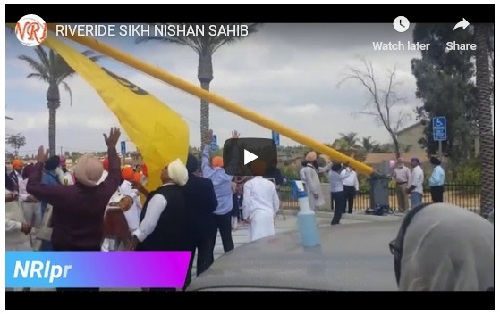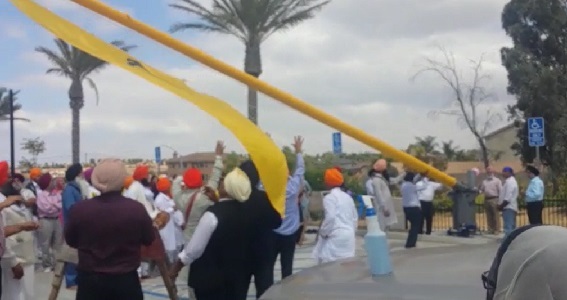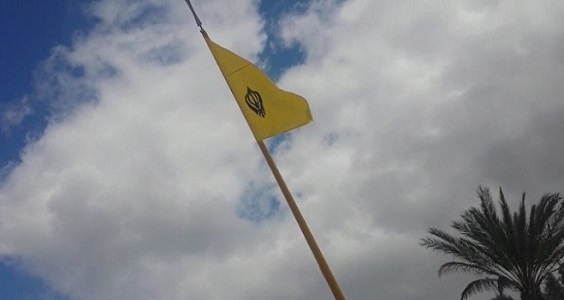| Connecting
30 millions NRIs worldwide |
|
|||||||||||||||||||||||
New Nishan Sahib Installed at Inland Sikh Education Empire, Riverside, California
The symbol of the freedom of the Khalsa
Nishan Sahib indicates the location of the Gurdwara: Caste, religion, region/Nationality, colour and the status of the visitors to the Shrine is No bar
-

Riverside, California, April 30, 2019
NRIpress.club/Ramesh/ A.Gary Singh Grewal
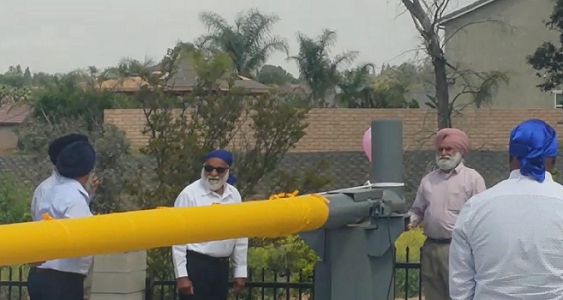 |
|
In Sikhism, Nishan Sahib: Nishan means flag, insignia, or banner AND Sahib is a term of respect meaning Master, or Lord. Nishan Sahib to show respect for the exalted insignia.
The Sikh flag is a saffron-coloured triangular-shaped cloth, usually reinforced in the middle with Sikh insignia in blue. It is usually mounted on a long steel pole headed with a Khanda. It is also covered with saffron-coloured cloth and often seen near the entrance to the Gurdwara. The Nishan Sahib is flown from a flag pole.
The Nishan Sahib taken down ceremoniously and changed annually.
In 1606, Sixth Guru Har Govind, raised the first Sikh flag (Akal Dhuja , or Satguru Nishan) over the Akal Takhat seat of authority in Amritsar, Punjab. In 1771, Jhanda Singh raised a second flag at the top of Gurdwara Harmandir Sahib of the golden temple complex in Amritsar, where two illustrious Nishan Sahibs still fly proudly. "Waheguru Ji Ki Fateh" in Punjabi script (Victory of God) was inscribed on the Nishan Sahib of Guru Gobind Singh Ji.
|
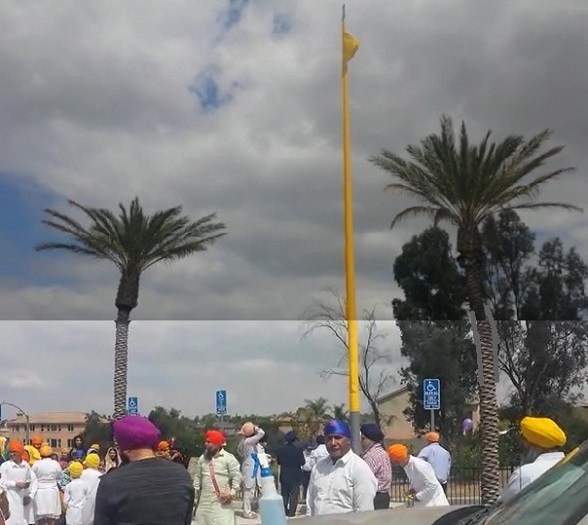 |
Mandated by the Sikh Code of Conduct and Conventions, every Gurdwara is required to fly the Nishan Sahib. |
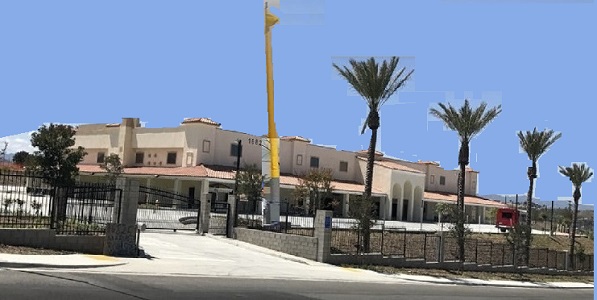 Inland Sikh Education Empire, Riverside. California Inland Sikh Education Empire, Riverside. California |

